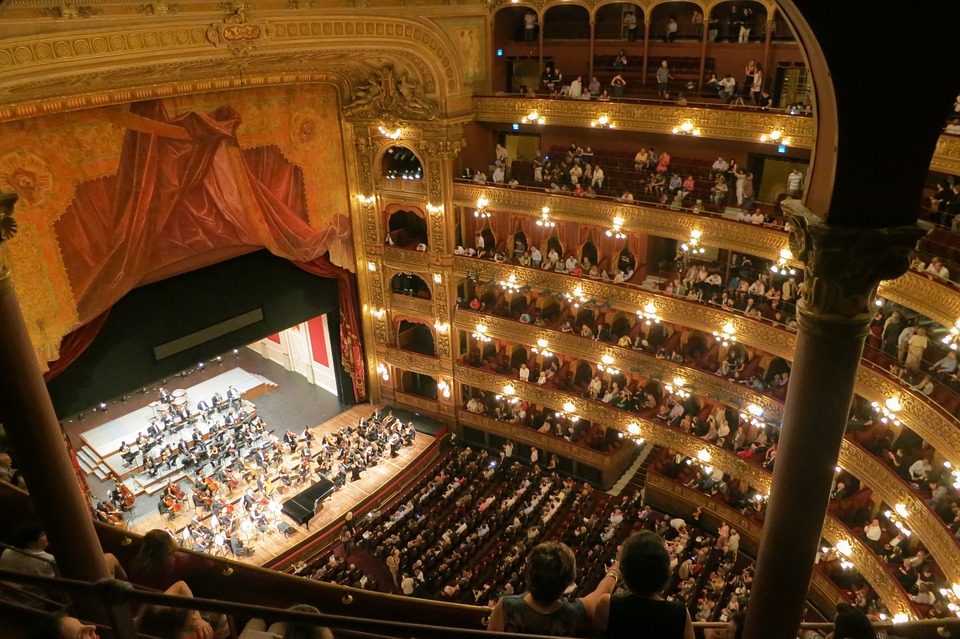Innovative Staging Techniques: Pushing Boundaries in the Theatre Industry
Introduction:
The theatre industry has always been at the forefront of creativity and innovation. From ancient Greek amphitheatres to contemporary Broadway productions, theatre has been continually pushing boundaries to captivate audiences and tell stories in new and exciting ways. In recent years, there has been a surge in groundbreaking staging techniques that challenge traditional norms, delivering unforgettable experiences for theatre-goers. In this article, we will explore some extraordinary examples of innovative staging techniques that are revolutionizing the theatre industry, blurring the line between reality and imagination.
1. Projection Mapping:
Projection mapping is a technique that uses synchronized projectors to transform flat surfaces into dynamic and interactive displays. Although commonly associated with visual arts and advertising, this technique has found a powerful application in the realm of theatre. Productions like “Sleep No More” have pioneered the use of projection mapping to create immersive environments, where every wall and corner becomes a canvas for projecting images, videos, and light. This technique allows an audience to be transported into multiple locations within the same space, enhancing the narrative and pushing the boundaries of traditional staging.
2. Augmented Reality and Virtual Reality:
Advancements in technology have opened up new possibilities for incorporating augmented reality (AR) and virtual reality (VR) into the theatrical experience. By wearing AR glasses or VR headsets, audiences can witness computer-generated imagery superimposed onto the real stage, blurring the lines between the physical and virtual world. This immersive technology can transport audiences to different time periods, fantastical realms, or even inside the minds of characters, offering a truly unique and interactive theatre experience.
3. Immersive Theatre:
Immersive theatre pushes the boundaries of traditional stage-audience relationships. Instead of passively observing from a distance, audiences become active participants within the performance. In productions like “Punchdrunk’s The Drowned Man”, audiences are free to explore multiple floors and rooms, encountering performers who seamlessly incorporate them into the story. This blurring of the line between performer and observer creates an intense and personal experience, stretching the limits of what theatre can achieve in terms of audience engagement.
4. Environmental Scenography:
Environmental scenography challenges the idea of a fixed stage by transforming entire spaces into performance areas. Productions like “Once” have utilized this technique by transforming the stage into a working bar before the show starts, allowing audiences to interact with the set and performers in a more intimate way. By creating a realistic and immersive environment outside of the traditional stage, environmental scenography transports the audience into the heart of the narrative, fostering a deeper connection with the story.
5. Holographic Technology:
Holographic technology has become increasingly prevalent in the theatre industry, adding a touch of magic and illusion to performances. Holographic projections can bring deceased actors and historical figures to life on stage in productions such as “Ghost: The Musical” or even create fantastical creatures and ethereal environments, as seen in “The Lion King”. This innovative technique defies the limitations of physical space and time, allowing characters and objects to appear and disappear seamlessly, captivating audiences and enriching the theatrical experience.
6. Integration of Acrobatics and Circus Arts:
The integration of acrobatics and circus arts into traditional theatrical performances has gained popularity, adding a dynamic and visually stunning element to storytelling. Productions like “Pippin” and “Cirque du Soleil” have successfully merged traditional theatre with daring aerial stunts, breathtaking contortions, and daring feats of physicality. This blending of theatrical and circus techniques pushes the boundaries of what is typically expected on a stage, bringing an element of awe, surprise, and danger to the audience experience.
Conclusion:
As the theatre industry continues to evolve, innovative staging techniques are becoming increasingly vital in pushing boundaries and capturing the imagination of audiences. These groundbreaking techniques, including projection mapping, augmented reality, immersive theatre, environmental scenography, holographic technology, and the integration of acrobatics and circus arts, are redefining the theatrical experience. By blurring the lines between reality and fiction, these techniques have transformed the theatre industry into a space where anything is possible, where the only limit is the boundless creativity of the human imagination.

